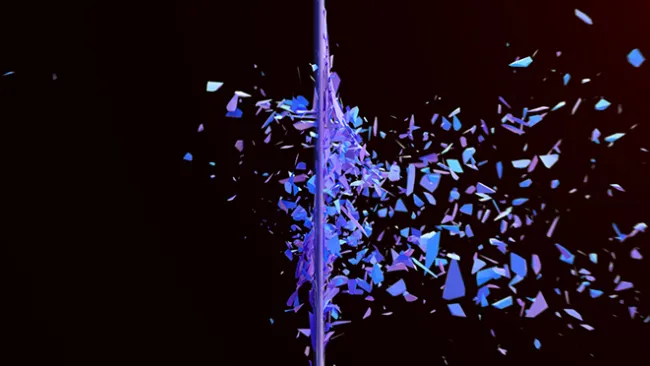Improving customer experience is a constant work in progress, and valuable insights can come from anywhere. The customer experience (CX) landscape is rapidly evolving and, to outperform the competition, it's essential to draw from past experiences and knowledge.
Throughout my career, I had the privilege of working with prominent figures in the video gaming industry, and I was amazed at how their lessons could be applied to modern CX. Among these pioneers were Scott Tsumura, Jason Enos, Bill Fisher, and Hans Ippisch, who not only contributed to my professional growth but also held a special place in my childhood memories long before we crossed paths.
Scott Tsumura, with almost five decades of experience, was responsible for producing many arcade games that my friends and I used to ride our bikes to play in the 1980s, such as Moon Patrol, MotoRace USA, Kung-Fu Master, Lode Runner, 10-Yard Fight, and Spelunker.
In his impressive 30-year career, Jason Enos had successfully launched more than 100 video games on various platforms. He played a pivotal role in bringing the wildly popular Dance Dance Revolution to America, a game that had people lining up in arcades to play.
Throughout his career, Bill Fisher worked at influential companies like Mattel Electronics, Quicksilver, and Beyond Imagination. He made significant contributions to the gaming industry, creating games that became classics in the 1980s, including the widely enjoyed B-17 Bomber on the Intellivision gaming console. I remember Bill sharing with me the original notes and floppy discs of several popular games he had created that we played as kids.
Hans Ippisch's remarkable career included founding the first gaming studio in Bavaria in 1986 and later publishing some of the most renowned gaming magazines I read as a kid, including ones for PlayStation, Nintendo, Xbox, and Sega. During the Pokemon boom in 1999/2000, his Kids Zone magazine achieved an impressive circulation of 360,000 copies bi-weekly.
Decades ago, these trailblazers helped create an entire customer-focused industry from scratch, one that’s since grown into a nearly $200 billion industry that’s projected to grow 13% annually. How they did it, and what they learned along the way, can help the CX world as we navigate our own digital and customer revolution.
Make sure there’s substance behind new technology
Technology is always changing; that’s true in gaming and true in CX. But even the best technology won’t help if the underlying customer experience is broken.
In the early days, video games had to be perfected before they were launched. There was no way to fix glitches on physical game cartridges once they went out the door. Today, with the advent of online games, developers can add new features anytime – quickly and relatively easily – but that brings its own challenges and pressures, Fisher noted.
Tsumura remembered moving the game Lode Runner from the PC version to the arcade, and all the changes to colors, graphics, and user experience changes that came with it. But even amid all those exciting changes, he said, he knew it was important to maintain the essence of the original game players had come to know and love.
What's the takeaway when it comes to CX? Don’t sacrifice the core of your brand and what customers expect from you in the name of technology or new channels. Cutting-edge technology is great, and can improve your CX in meaningful ways, but only if it’s being guided by your customer journey and alleviating pain points.
Prioritize the voice of the customer
In gaming’s early days, developers had to rely on their instincts when trying to create games that players would enjoy. The stakes were high – if a game failed, it posed a significant risk to brands – and developers had little to go on as they worked.
There was no way to incorporate player feedback as they crafted their virtual worlds. Fisher, for instance, recalled a space shuttle game that developers had high hopes for because it looked great, but which players ultimately found boring to play.
Often, that lack of customer feedback led to misguided decision-making. When Enos first brought the game Dance Dance Revolution to the Western market, some corporate executives feared the game’s previous success in Asia couldn’t be replicated. They were clinging to outdated gender stereotypes and ideas about gaming preferences, but Enos believed in the game’s potential and persisted for more than a year. That game’s success later paved the way for other music genre games like Rock Band and Guitar Hero.
What does this mean when it comes to CX? Don’t forget about the voice of the customer. Don’t assume you know what they want; listen to interactions and cull data to get a real-time view of your customers’ journey with your brand. What’s delighting them? What’s frustrating them? What are they saying when they contact customer support? With that information in hand, you can proactively provide the best experience possible.
Keep evolving as your customers do
Constant evolution is key to gaming brands’ success. There are always new technologies to try, changing player expectations to meet, and new competitors entering the market. More than ever, gaming brands are competing for customers’ attention in an increasingly crowded industry.
But gaming growing more ubiquitous isn’t a bad thing, said Enos. It means there are more opportunities for games to touch people’s lives, and more chances for game developers and brands to entertain and delight.
The CX landscape is continually evolving too, which is why it can be helpful to have an expert partner for guidance. Like the games and gaming brands that have continued to thrive for decades, successful companies in any industry need to be agile and embrace change. There is no finish line when it comes to customer experience, so keep looking for the new strategy, technology, expertise, and processes to take CX to new heights.














